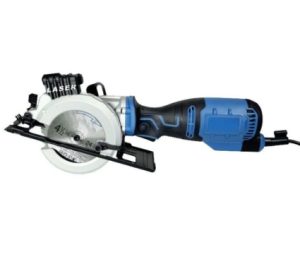Our Location
304 North Cardinal St.
Dorchester Center, MA 02124

Handheld electric saws are indispensable tools in both professional and DIY settings, offering portability, efficiency, and precision for cutting various materials like wood, metal, and plastic. The market for handheld electric saws is diverse, with numerous brands and models catering to different needs and preferences. This report provides an in-depth look at handheld electric saws, focusing on their types, key features, and some of the most popular brands and models available in 2024.
DeWalt is a well-known brand in the power tools industry, renowned for its durable and high-performance tools.
Bosch is another leading brand, offering a range of reliable and efficient power tools.
Makita is a global brand known for producing high-quality power tools that combine power and portability.
Milwaukee is renowned for its innovative and durable tools, particularly in the cordless segment.
Ryobi offers a range of affordable yet reliable tools, making it a popular choice for DIY enthusiasts.
Black+Decker is known for producing user-friendly and affordable power tools suitable for both home use and light professional tasks.
Worx is known for its innovative and compact power tools that offer great value for money.

As the market continues to evolve, several new models have been introduced in 2024 that stand out for their innovative features, performance, and value.
The DeWalt DCS578B is an upgraded version of the popular DCS570B circular saw. This model features a more powerful 60V MAX battery, offering increased cutting capacity and longer runtime. The saw is equipped with an electric brake, an integrated dust blower, and a durable magnesium shoe, making it ideal for both professionals and serious DIYers.
Bosch’s GKS18V-25GC is a high-performance cordless circular saw designed for heavy-duty applications. It features a brushless motor and a ProCORE18V battery, delivering impressive power and runtime. The saw also includes Bosch’s advanced connectivity features, allowing users to customize settings and track tool usage via a smartphone app.
The Makita XSR01PT is a rear-handle circular saw powered by two 18V LXT batteries, providing 36V of power. This model is designed for framing and other demanding applications, offering the power of a corded saw with the convenience of cordless operation. It also features a brushless motor, Automatic Speed Change™ technology, and an electric brake for enhanced safety.
Milwaukee’s M18 FUEL 2737-21 jigsaw is one of the most advanced models in its class. It features a POWERSTATE™ brushless motor, providing faster cutting speeds and longer tool life. The saw also includes REDLINK PLUS™ intelligence for optimized performance and a 4-position orbital cutting mechanism for versatility in various materials.
The Ryobi PBLJS01B is part of the ONE+ HP series, featuring a brushless motor for increased performance and efficiency. This cordless jigsaw offers variable speed control and a 4-position orbital cut adjustment, making it suitable for a wide range of cutting tasks. It’s also lightweight and ergonomically designed for user comfort.
Black+Decker’s BDECS300C circular saw continues to be a popular choice for homeowners and DIYers. This model is known for its compact design, ease of use, and affordability. It features a 13-amp motor and a high torque for efficient cutting, making it ideal for small to medium-sized projects.
The Worx WX427L is a compact and lightweight circular saw designed for precision cutting. It features a slim, ergonomic design and a powerful motor that can cut through a variety of materials, including wood, metal, and tile. This saw is particularly well-suited for users who need a portable and easy-to-handle tool for detailed work.
The handheld electric saw market is highly competitive, with several key players dominating the industry. These companies continually innovate to offer more advanced, reliable, and user-friendly tools to meet the diverse needs of professionals and DIY enthusiasts alike. The competition among brands like DeWalt, Bosch, Makita, Milwaukee, Ryobi, Black+Decker, and Worx drives continuous improvement in product design, technology, and performance.
The market for handheld electric saws can be segmented into various categories based on power source, application, and end-user.
Handheld electric saws are essential tools for a wide range of applications, from construction to woodworking to DIY projects. The market in 2024 is characterized by a diverse array of models, each offering unique features tailored to different needs. Leading brands like DeWalt, Bosch, Makita, Milwaukee, Ryobi, Black+Decker, and Worx continue to innovate, driving advancements in power, efficiency, and user comfort.
As the industry evolves, trends such as the shift towards cordless technology, the integration of smart features, and the focus on ergonomics and sustainability will shape the future of handheld electric saws. Despite the challenges of high competition and price sensitivity, there are ample opportunities for growth, particularly in the DIY market and emerging regions.
Whether for professional use or home projects, selecting the right handheld electric saw involves considering factors such as power source, blade compatibility, ergonomics, and safety features. With the right tool, users can achieve precise, efficient, and safe cutting, making handheld electric saws an invaluable asset in any toolkit.
